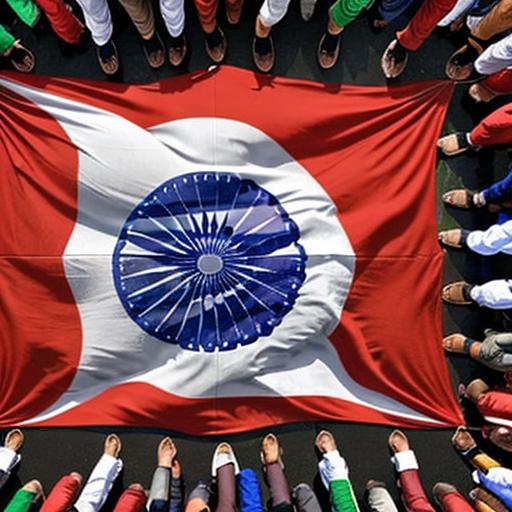Introduction:
India, with its rich tapestry of religions, has witnessed a complex interplay between religious beliefs and political dynamics throughout its history. This blog explores the intricate intersection of religion and politics in India, examining how these two forces shape and influence each other in the diverse landscape of the nation.
Historical Context
1. Ancient Roots:
Uncover the ancient roots of the intersection between religion and politics in India, exploring how rulers and kingdoms often derived legitimacy from religious sanction.
2. Mughal and Sultanate Period:
Examine the dynamics during the Mughal and Sultanate periods, where the intertwining of religion and political authority played a pivotal role in shaping governance.
Colonial Influence
3. British Colonial Era:
Discuss the impact of British colonialism on the religious-political landscape, examining how divide-and-rule strategies influenced communal tensions.
4. Role of Reform Movements:
Highlight the role of religious reform movements in response to colonialism, shaping political thought and the quest for independence.
Post-Independence Secularism
5. Nehruvian Secularism:
Explore the concept of secularism in post-independence India, as envisioned by leaders like Jawaharlal Nehru, and how it aimed to maintain a separation between religion and politics.
6. Challenges to Secularism:
Discuss the challenges to the Nehruvian model of secularism, including communal tensions and the rise of identity politics.
Rise of Identity Politics
7. Communal Polarization:
Examine instances of communal polarization, where religion becomes a key factor in political mobilization, often leading to divisive outcomes.
8. Role of Political Parties:
Discuss how political parties have strategically used religious identity as a tool for garnering support and electoral success.
Religious Movements and Activism
9. Religious Revivalism:
Explore the phenomenon of religious revivalism, where movements seek to revive and assert the cultural and religious identity of particular communities.
10. Interfaith Movements:
Highlight positive aspects of the intersection, such as interfaith movements that promote dialogue, tolerance, and cooperation in the political sphere.Legal and Constitutional Aspects
11. Secularism in the Constitution:
Examine how secularism is enshrined in the Indian Constitution and the challenges faced in maintaining a secular state.12. Legal Battles:
Discuss landmark legal battles that have shaped the relationship between religion and politics, addressing issues of religious freedom, discrimination, and state intervention.Contemporary Dynamics
13. Ayodhya Dispute:
Explore the Ayodhya dispute as a case study, delving into how a religious site became a focal point of political and legal contention.14. Role of Social Media:
Discuss the role of social media in shaping religious narratives and influencing political opinions, contributing to both unity and polarization.Global Perspectives
15. Comparative Analysis:
Compare the intersection of religion and politics in India with global examples, examining similarities, differences, and lessons that can be drawn.16. Impact on Foreign Relations:
Examine how the intersection of religion and politics in India influences the nation's foreign relations and diplomatic engagements.Future Trajectory
17. Youth and Changing Dynamics:
Discuss the role of youth in shaping the future trajectory, exploring how changing dynamics and evolving perspectives may impact the intersection of religion and politics.18. Balancing Act:
Delve into the challenges and opportunities of finding a delicate balance between religious identity and political governance in a diverse and pluralistic society.Conclusion
“Sacred Nexus” invites readers to navigate the nuanced relationship between religion and politics in India. From historical roots and colonial influences to post-independence secularism, identity politics, and contemporary dynamics, this blog explores how these intertwined forces shape the nation’s socio-political landscape and pose both challenges and opportunities for its democratic ethos.”

